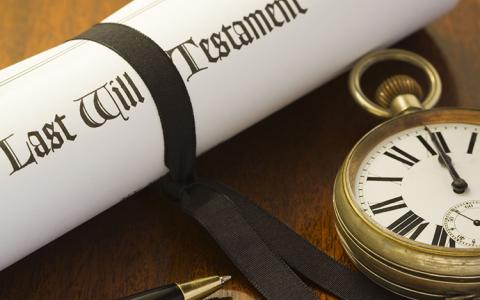
For most of us, thinking about creating even a simple last will and testament is about as enjoyable as having teeth pulled. We procrastinate, we make excuses and we justify avoidance. We may even think of situations in which people have managed to die without proper documents in place and how those specific instances turned out fine after all.
But ultimately, we also know that part of being an adult is managing our own lives. Whether we enjoy planning ahead, we all must do so as a basic tenant of survival.
On a short-term basis, we must use our expectations of needs for the coming month to determine how to best distribute our monthly income. Estate planning is using the same short-term financial management and extending that to long-term expectations.
The simplest way to start on estate planning is to write down the best and worst futures that you see for yourself.
Creating your best-case scenario should be easy, as nearly everyone will include remaining fairly healthy at home, with the same income and equal or greater assets. Considering the worst-case scenario may be more difficult. Imagine what declining health could look like and include the higher costs of care. Be realistic about where you would live and who would be able to care for you.
Too often, we plan based on the first scenario and prefer to avoid thinking about the second. Planning should include both.
Remember, a worst-case scenario also should consider the loss or disability of beneficiaries. If that thought makes you uncomfortable, you are not alone. Thinking about our own potential declines pales in comparison to considering the disability or loss of loved ones.
However, while your proactive planning will not cause terrible events to befall your beneficiaries, it can absolutely give them significant financial protection if it does happen.
We tend to think of January as a fresh start. We can put old habits aside and make new goals. This is also the time when financial statements arrive in anticipation of tax filings.
Creating a Financial Life Book is a simple way to keep track of your estate, for yourself and for any future fiduciaries. I recommend purchasing a three-ring binder and a set of tab dividers. Include in your binder sections for income statements, asset statements for liquid assets, deeds to real property, life insurance policies, annuity policies and a list of the names of each bank, broker and advisor you work with.
This binder serves a two-fold purpose.
First, there will be times when you need to gather information on your own finances. Whether you are purchasing a piece of property or meeting with a financial advisor, you can see a quick snapshot of your income and assets
Second, when you become incapacitated or die, the person tasked with handling your finances will immediately have what they need to handle your affairs. Very little work up front on your own behalf will save countless hours of frustrating work later for your fiduciary.
Use your best- and worst-case scenarios alongside your Financial Life Book for realistic planning. Solicit advise from people you trust and meet with planning professionals.
Keep in mind, the purpose of a planning professional is to help you meet your own goals while mitigating your potential risk. By preparing your own goals in advance, planners will better understand what you hope to accomplish as well as what you want to avoid.
After 2020, we all hope for a clean start to 2021. This is a good time to take back some control over our own futures with intentional planning.
This article originally appeared on Insurances News Net.



